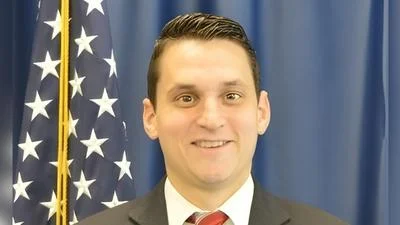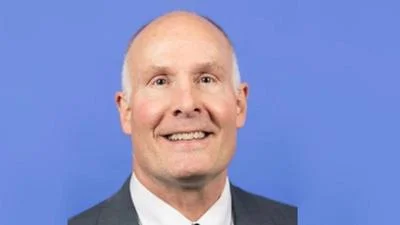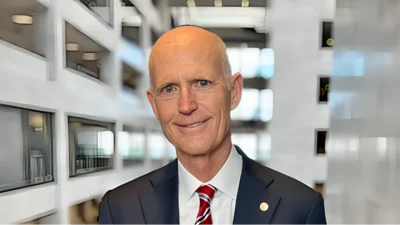Only by delivering quality education for all our citizens - from the earliest years to the college years -can we ensure freedom, equality, and social mobility; to make opportunity real for each and every American, and continue to lead the world to economic security and lasting prosperity.
Thank you, Mr. Chairman. And thank you, Mr. Secretary, for joining us today. You are a tireless advocate for public education, and it is always a pleasure to spend time with you.
Everyone in this room knows that broad access to education is crucial to the proper functioning of our American democracy. Only by delivering quality education for all our citizens - from the earliest years to the college years -can we ensure freedom, equality, and social mobility; to make opportunity real for each and every American, and continue to lead the world to economic security and lasting prosperity.
Especially in this tough economy, families turn to education because they know that's the future for them and for the country. That's the deal in America. And without broad access to education, there is no middle class in this nation. The compact is broken that allows hard work to pay off and future generations to be able to do better.
And yet, despite all this, our federal support for education has not kept pace with population growth and inflation over the past decade.
As of last year, when you exclude Pell Grants, per-capita and inflation adjusted discretionary spending at the Department of Education has been cut by approximately 14.2%, or $7.5 billion, that's since 2002. Let me be clear - That reduction was in place even before the sequester was implemented. This has happened even as the number of children living in poverty grew from 16.3 percent to almost 22 percent over the last decade.
And now, we have deep, indiscriminate cuts known as the sequester that have slashed an additional $2.5 billion from education programs. Just a couple of examples: Sequestration cuts $730 million from Title I, $580 million from IDEA, and $58 million from afterschool programs, and the list could go on and on.
What does this mean? It means that millions of disadvantaged students will suffer from reduced educational services. It means federal support diminishes for hundreds of thousands of children with special needs. It means 86,000 students will lose access to after-school and summer school programs. Again here I could go on all day.
The states, unfortunately, are not in a position to take up this slack. In fact, per pupil spending has been reduced below 2008 levels in 37 states, all across the country.
Sadly, in this environment, I believe and it's my view the House Majority has insisted we drive down federal investment in education. Since this Majority took control of the House in 2011, 44 federal education programs, totaling more than $1.1 billion, have been completely terminated.
Their education appropriations bill last year tried to cut an additional $1.2 billion from Education and eliminate even more programs, including School Improvement Grants, Investing in Innovation, and Mathematics & Science Partnerships.
And their 2014 budget from just last month tries to cut education programs by 20 percent. It's wrong. It doesn't make sense to roll back our critical investments in education, particularly at this delicate economic moment.
Now, turning to the budget put forward by the president. From a top-line view, I am delighted to see increased investment made toward furthering both access to, and the quality of, public education. I'm glad to see this proposal reverses the sequestration cuts, and funds some programs above the fiscal year 2013 pre-sequester level.
I regret that the current budget environment does not allow for the much needed increases to Title I and IDEA that I think we can all agree are necessary.
That being said, this budget proposal does includes a welcome expansion of high quality early childhood education, which studies show time and again is a wise investment in our national economy that will produce returns for children, for families, and for our entire country.
I am also very supportive of the President's school safety initiative, which, among other things, helps schools develop and implement emergency preparedness plans and create safer and more nurturing environments.
I am thrilled that this budget request increased the Promise Neighborhoods Program by 400%, it helps more children and communities overcome the challenges of poverty. I am also pleased to see this budget requests a nine percent, or $100 million, increase for the 21st Century Community Learning Centers.
Mr. Secretary, you know some of my concerns in this area, I am concerned that the Department's policies seem to place an emphasis on extended learning time programs over traditional after school programs, which is not what Congress authorized this program to do. I am concerned that this particular request eliminates the current formula funding to states, in favor of a national competition.
The emphasis on competitive funding I find troubling. While the overall request increases education spending by 4.5 percent over the 2012 level, most of the increases are to competitive grants. And oftentimes competitive funding seems to reward a state's grant-writing ability rather than its actual school system. My view what is needed is steady, secure funding for all our schools to move towards improvement.
If we want to create jobs, grow the economy, we have to work to ensure educational opportunity for all. And that means recognizing the profound impact that poverty has on learning, investing in early childhood education and afterschool programs, and ensuring that kids have access to good nutrition, good health, and good counseling.
Education is the great equalizer in American life. It opens doors of opportunity to jobs, higher wages, and a better life. I hope today that we can discuss how best to ensure all of our students have access to these opportunities. I thank you, and I look forward to your testimony.
Source: U.S. Department of HCA








